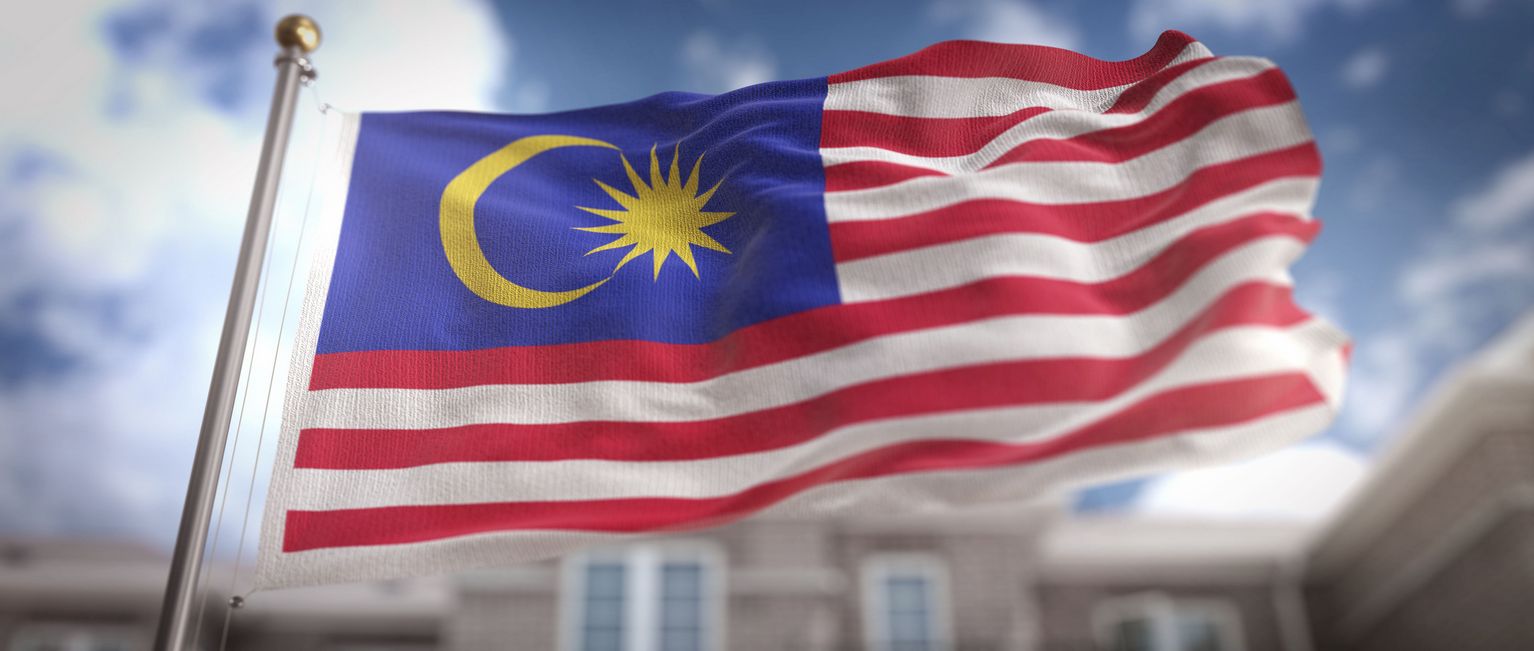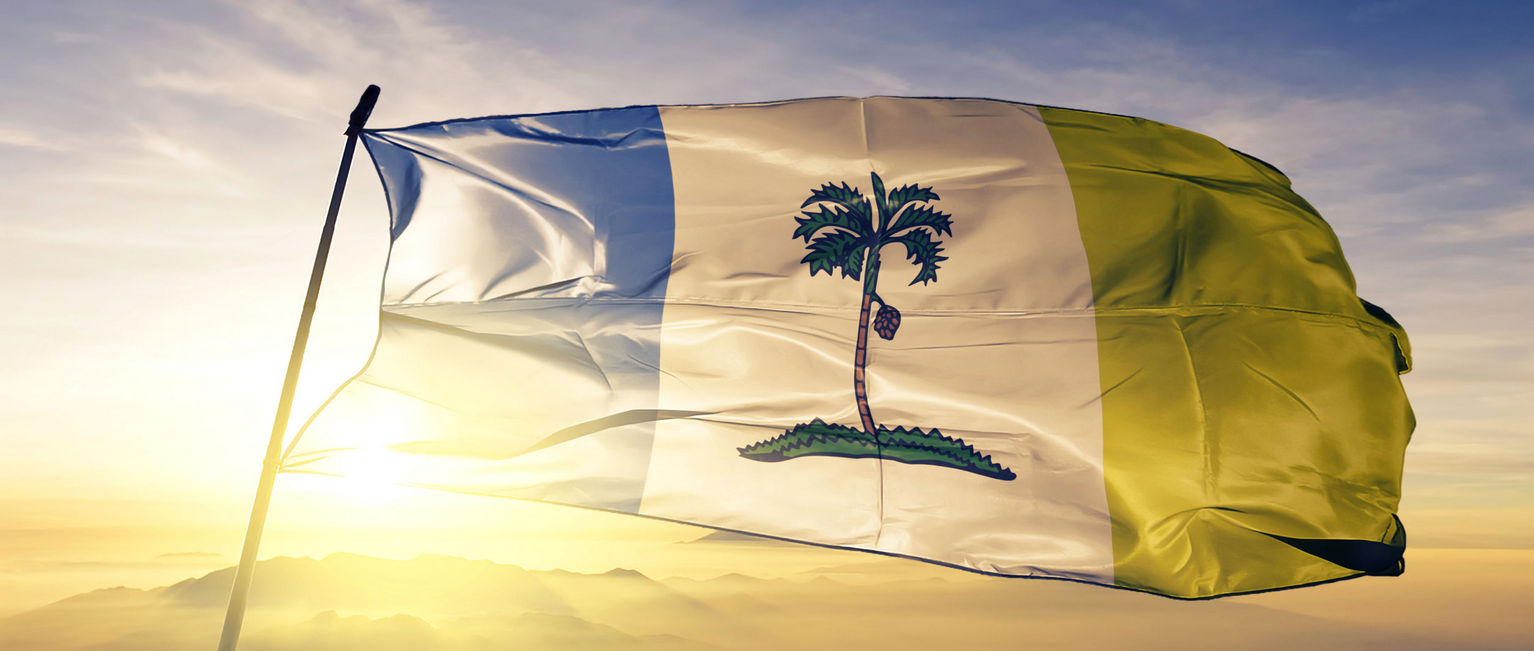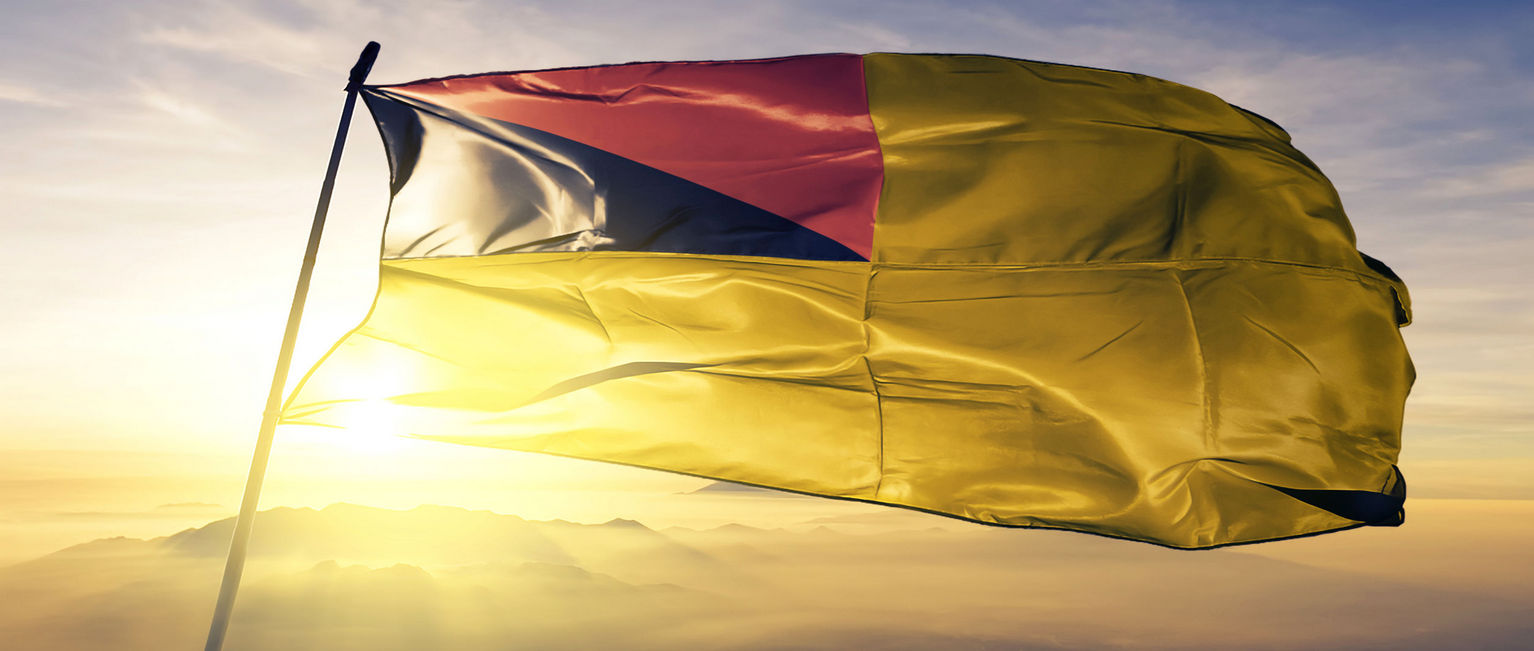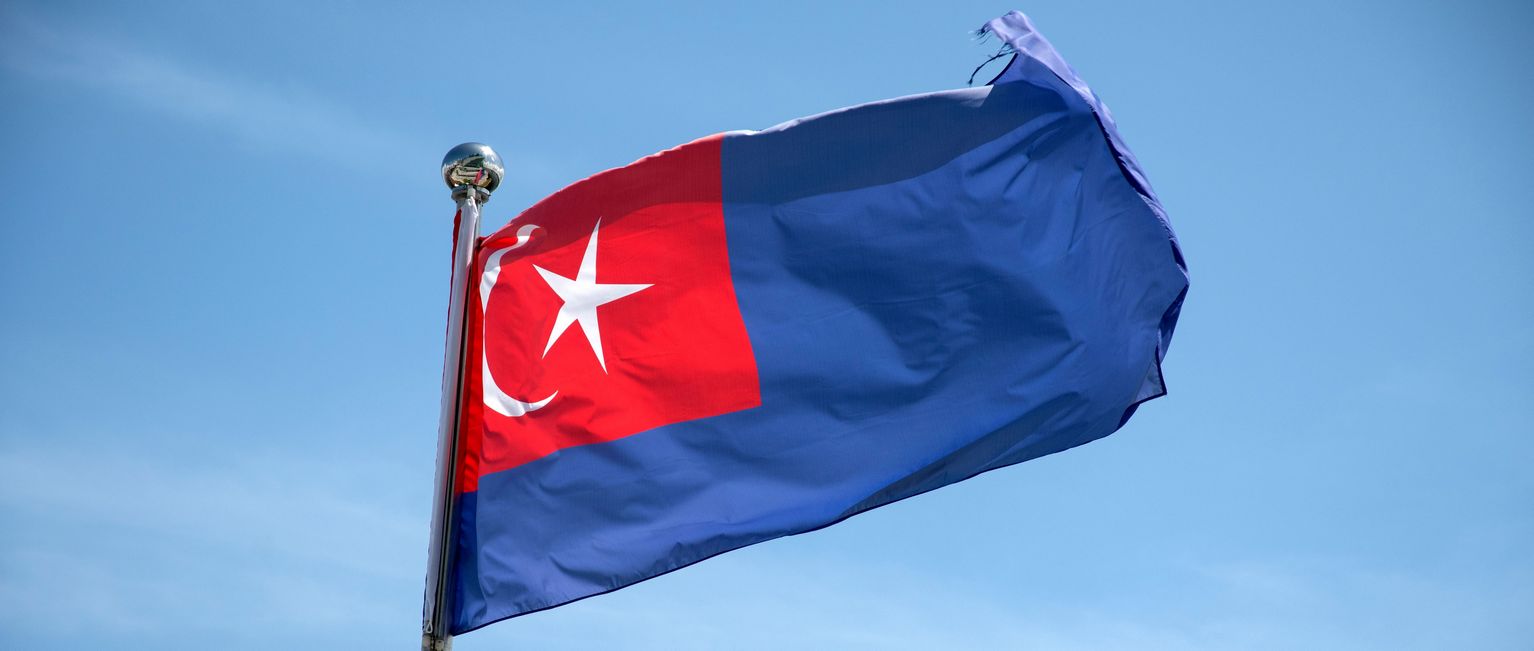Aptly named Jalung Gemilang or Stripes of Glory, the Malaysian flag is a symbol of the dignity and sovereignty of our country. The flag was designed by architect Mohamed Hamzah for a competition in 1947. It’s 14 alternating red and white stripes represent the federation’s member states and federal territories, whereas the yellow crescent and 14-point star reflect Islam as the country’s official religion and the equal representation between the states. The blue canton is a symbol of unity, while yellow is the colour of royalty.
Beyond the national flag, Malaysia boasts an array of state flags, each with a distinct history and identity.
Penang
Penang, or Pulau Pinang, which literally means “Areca Nut Island”, has one of the most unique flags in the country. Adopted in 1949, following the end of the Straits Settlement, Penang’s flag is the one among the states that is vertically divided. Its colours and design are also the most literal representation of its name and geographical makeup.
The flag’s light blue, white and yellow evenly spaced panels signify the sea surrounding the island, the serenity of the state and the prosperity of its people, respectively. Befitting Pulau Pinang’s name, on the central white strip stands the humble pokok pinang, or areca nut palm, the bane of school children around the country when tasked to draw Malaysian state flags!
Kelantan
As a state with an ancient aristocratic history, Kelantan’s flag references its royal institution with a simplified version of its coat of arms on a red background. The image includes the crescent moon, a five-pointed star, dual spears and two unsheathed keris. These first two represent Islam in the state while the later symbols evoke the strength and fiercely guarded independence of the Kelantanese people.
The background red stands for honesty and the white of the central motif signifies the sanctity of the Sultanate.
Negeri Sembilan
Moving further south down the Peninsular, we find one of the simplest state flags in one of Malaysia’s smallest states, Negeri Sembilan. It consists of only three coloured blocks. The red, black and yellow are the traditional colours of the Minangkabau people, who are closely linked to the history and origins of the proto-democratic state, with their own version of the people selecting their leaders.
The yellow symbolises the head of state, HRH Yang Di-Pertuan Negeri Sembilan, while the black stands for the Datuk-Datuk Undang (territorial chiefs) who govern the luak (an administrative area) within the state. As a counterbalance, the red represents the people with their rights and voices guaranteed, through traditional, national and state constitutions.
Johor
The current Johor flag, which has been used since 1871, is one of the oldest flags in Malaysia. The navy blue, which occupies roughly three quarters of the flag, represents the unity of the state government. The red symbolises the Hulubalang (the highest commander in classical Malay kingdoms) who were loyal to Sultan Abu Bakar and defended the state from harm. The white crescent and star denote Islam and Johor's sovereign ruler, respectively.
The tilted white crescent and star, reminiscent of the Turkish flag, is believed to be a homage to the strong diplomatic relationship between the Johor Royalty and the Ottoman Empire in the 20th Century.
Sabah
Over on Borneo, the flag of Sabah prominently depicts the state’s sacred natural treasure, Gunung Kinabalu, one of the tallest mountains in Southeast Asia.
The design went through a series of evolutions before becoming what it is today. On 31 August 1963, Sabah adopted a four-striped flag, red, white, yellow and blue, with a green canton and a brown mountain. The flag went through a major re-design in 1986, featuring blue over white with a red triangle on the hoist, dropping the mountain silhouette altogether.
However, in 1998, the new and most recent Sabah flag was introduced, the mighty mystic mountain returned, and this is the flag used to this day. The zircon blue of the flag symbolises peace and tranquillity while the white recalls purity and justice. The chili red represents courage and conviction, the icicle blue depicts unity and prosperity and the royal blue stands for strength and co-operation. The now dark blue mountain dominates the upper left panel on a light blue background.
---










